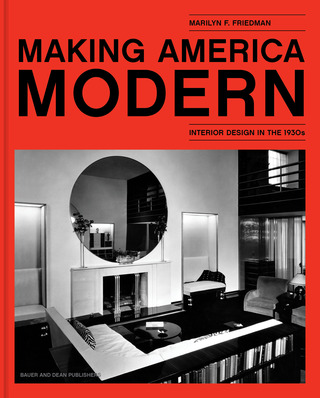Biography and New Publication

Marilyn F. Friedman is a design historian whose work focuses on the development and popularization of modern design across America during the 1920s and 1930s. Born and educated in New York, Friedman studied design history at Cooper Hewitt, Smithsonian Design Museum in New York City, earning a Master of Arts degree, which led to her first publication, Selling Good Design: Promoting the Early Modern Interior (Rizzoli, 2003).
Friedman's new book, Making American Modern: Interior Design in the 1930s (Bauer and Dean Publishers), will be released in April 2018. This book chronicles the development of modern interior design in the United States in the 1930s. With archival images and detailed descriptions, Friedman presents more than one hundred interiors by fifty designers and architects, including work by design luminaries Donald Deskey, Paul T. Frankl, Cedric Gibbons, William Lescaze, Tommi Parzinger, Eugene Schoen, Walter Dorwin Teague, Joseph Urban, and Kem Weber. Friedman also draws attention to lesser known male and female designers, such as Joseph Aronson, Virginia Conner, Freda Diamond, Robert Heller, and Eleanor Le Maire.
This comprehensive study features more than 200 photographs and renderings of private commissions, model homes, and exhibition displays that span the economic spectrum, from those created for wealthy patrons, such as Walter Annenberg and Abby Rockefeller Milton, to those designed with affordability in mind. The designers of the 1930s had in common a determination to forge a contemporary style, rejecting the revivalism that had defined American design during the nineteenth century. They drew their inspiration from diverse sources, such as art deco, the Bauhaus, the Viennese Secession, Shintoism, and streamlining, and they embraced new concepts in construction, materials, and style. Over the course of the decade they developed a framework for modern interior design that was faithful to core principles of simplicity, practicality and comfort, but allowed for experimentation. In the end, that conceptual framework, more than any particular design style, defined American modern interior design in the 1930s, and it does so today.